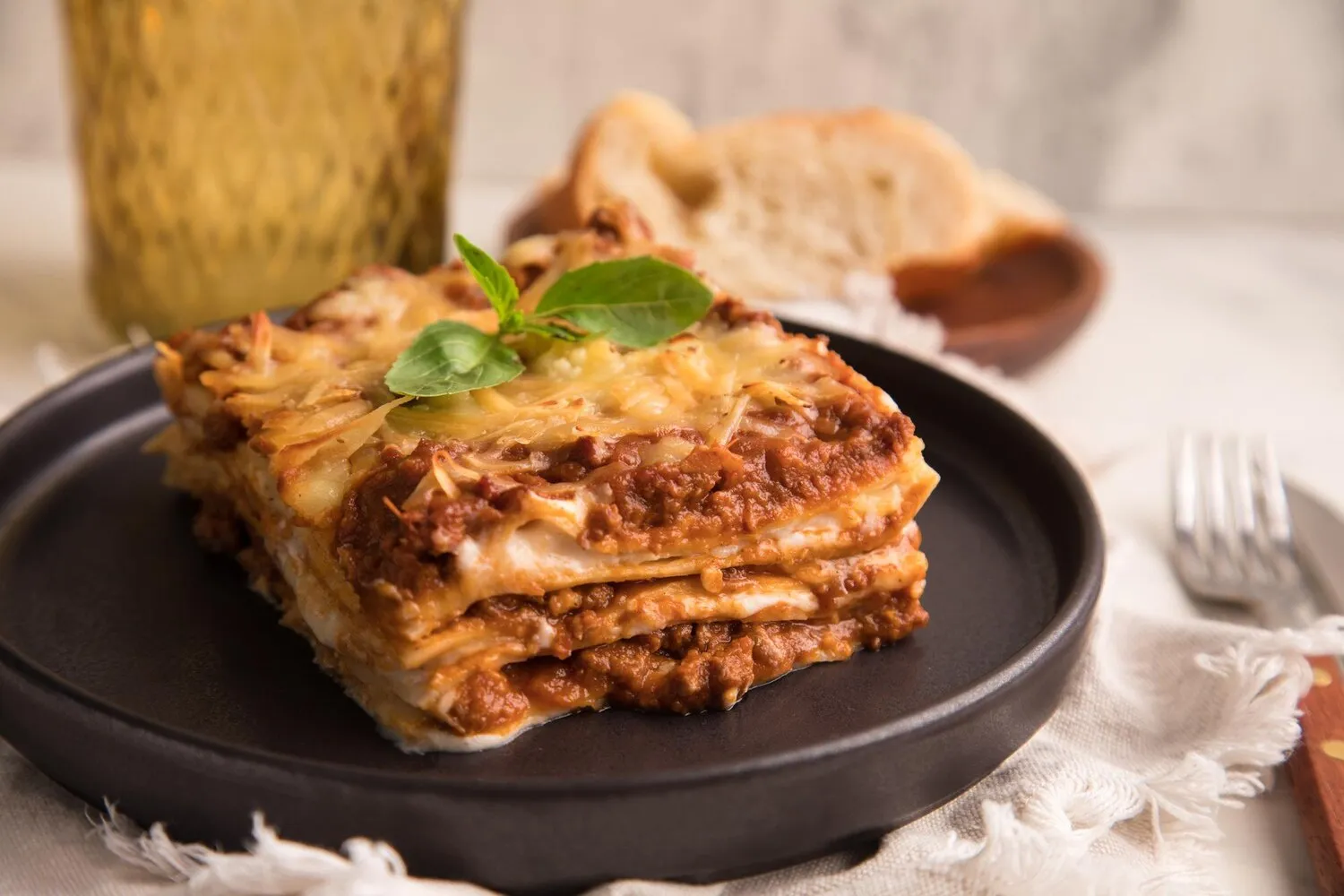
Lasanha
Classic lasagna dish.
Nutrition Facts
* The % Daily Value (DV) tells you how much a nutrient in a serving of food contributes to a daily diet. 2,000 calories a day is used for general nutrition advice.
Ital'in House - Brusque - Centro I
Lasagna's origins can be traced back to ancient Greece, where a dish called 'laganon' (flat sheet of pasta) existed. The Romans adapted this into 'lasanum,' referring to the pot in which it was cooked. However, the modern lasagna, with its layered structure and rich sauce, developed in the Naples region of Italy during the Middle Ages. It was initially a simpler dish than today's complex versions, often incorporating meat and cheese between layers of pasta.
Lasagna is more than just a dish in Italy; it's a symbol of family, tradition, and celebration. It's often prepared for special occasions like Christmas, Easter, and family gatherings, representing warmth, generosity, and togetherness. Its slow-cooked nature embodies the Italian philosophy of savoring life's simple pleasures.
Family Tradition
Lasagna recipes are often passed down through generations, with each family adding their unique twist to the dish. Making lasagna is often a collaborative effort, involving multiple family members.
Celebratory Meal
Lasagna is a common dish for holidays and special occasions in Italy, symbolizing abundance and celebration. Its presence often elevates the importance of the gathering.
Regional Variations
Different regions of Italy have their own unique variations of lasagna, reflecting local ingredients and culinary traditions. For example, in some regions, spinach is added to the pasta or filling.
Classic lasagna boasts a harmonious blend of savory, rich, and creamy flavors. The heartiness of the meat sauce, the tanginess of the tomato, the richness of the béchamel, and the sharp, nutty notes of the cheese create a deeply satisfying and complex taste experience.
The primary flavor components are: a rich ragu (meat sauce), traditionally made with ground beef or pork, tomatoes, onions, garlic, herbs (like oregano and basil), and sometimes red wine; creamy béchamel sauce, prepared with butter, flour, and milk, often seasoned with nutmeg; layers of pasta sheets; and generous amounts of cheese, typically a combination of ricotta, mozzarella, and Parmesan. Each layer contributes to the overall flavor profile, creating a symphony of taste and texture.
Layering Order
The order of layering can affect the final texture. A common approach is sauce, pasta, ricotta, mozzarella, Parmesan, and repeat. Ending with a generous layer of cheese ensures a golden and bubbly top.
Preventing Soggy Lasagna
To avoid a watery lasagna, ensure the ricotta is well-drained and the meat sauce is simmered long enough to reduce excess liquid. Some cooks also pre-cook the pasta sheets briefly.
Resting Period
Letting the lasagna rest for at least 15-20 minutes after baking allows it to set and makes it easier to cut and serve. The flavors also meld together during this time.
Homemade Pasta
Making homemade pasta for lasagna elevates the dish, offering a superior texture and flavor compared to store-bought pasta. This requires more time and effort but significantly enhances the final product.
Explore additional Italian dishes and restaurants
Explore ItalianDiscover top dining spots and culinary experiences in Brusque.
Explore BrusqueLearn more about the food culture, restaurant scene, and culinary heritage of Brazil.
Explore Brazil